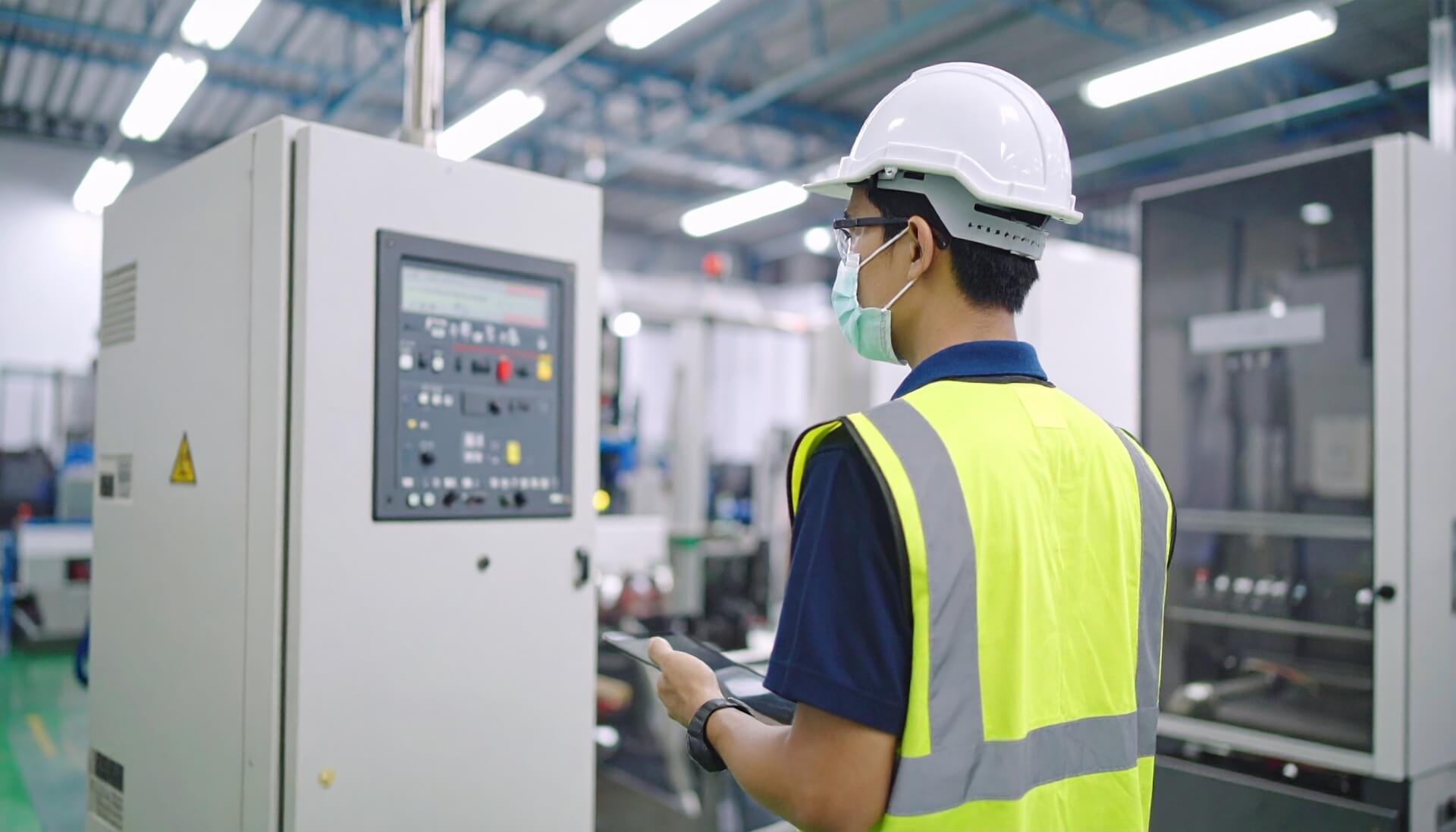Solve Factory Challenges with Equipment Maintenance Systems! Operational Methods, Implementation Steps, and Cost-Effectiveness-Based Selection
This section provides tips for efficiently operating equipment maintenance systems, outlines implementation steps, and offers guidance on selecting systems with cost-effectiveness in mind. NSXe, provider of the Wi-Fi vibration sensor “conanair,” supports optimal system implementation.
In modern factory operations, equipment maintenance plays a crucial role in ensuring stable operations and enhancing productivity. The introduction of equipment maintenance systems is rapidly expanding to address challenges faced by traditional maintenance methods, including labor shortages and sudden equipment failures.
By leveraging digital technology to monitor equipment status in real-time and enabling predictive maintenance, these systems overcome the limitations of conventional maintenance activities.
Here, we introduce tips for selecting an equipment maintenance system, focusing on efficient operation methods, implementation steps, and cost-effectiveness.
Efficient Operation Methods Using Equipment Maintenance Systems


Equipment maintenance systems are not merely data management tools; they form a robust foundation for dramatically improving factory operational efficiency. Their effective utilization is the key to stable operation.
Proactive Maintenance Planning Based on Real-Time Data
The first step in efficiently operating an equipment maintenance system is maximizing the use of real-time collected data. Raw data sent from sensors installed on equipment (such as vibration, temperature, and current) is instantly analyzed within the system, providing a visual representation of the current state of the equipment. This real-time monitoring enables the early detection of subtle abnormal signs that were previously difficult to capture through manual monitoring.
For example, if the system detects an unusual vibration pattern, it automatically triggers an alert and notifies the personnel responsible. This allows problems to be identified before they become severe, enabling proactive and planned maintenance.
By avoiding sudden production stoppages and maintaining production activities according to plan, the overall operational efficiency of the factory is dramatically improved.
Optimizing Field Operations Through Mobile Utilization
The efficient operation of equipment maintenance systems also significantly contributes to optimizing field work. Support for mobile devices such as smartphones and tablets is a key element in this.
Field workers can use mobile devices to check equipment status in real-time, receive system alerts immediately, and directly input or update maintenance progress on-site. This eliminates information transmission delays and reduces wasteful tasks, such as maintaining paper-based records or returning to the office for data entry. It lightens the burden on workers and enables faster, more accurate maintenance operations.
These efficient operational methods are key to achieving maximum results with limited resources in factories facing labor shortages.
Steps for Successful Equipment Maintenance System Implementation


Implementing an equipment maintenance system is a strategic investment that impacts a company's productivity. Following clear steps is essential for success.
Assessing Current Status and Setting Goals Before Implementation
To successfully implement an equipment maintenance system, accurately assessing your company's status and setting specific goals is paramount. Identify challenges in existing maintenance operations (such as unexpected breakdowns, costs, or labor shortages), and clearly define what you aim to resolve with the system and the expected outcomes. For example, establish concrete numerical targets, such as “Reduce unplanned downtime by XX%” or “Lower maintenance costs by XX%,” and clearly define the post-implementation evaluation criteria. It is vital to confirm the budget and necessary resources to create a realistic plan.
System Selection and Vendor Collaboration
After assessing the current state and setting goals, select the system that best suits your company. With a wide variety of systems available on the market, it is crucial to compare and evaluate their features, implementation costs, and support structures.
Particular attention must be paid to carefully assessing whether the system aligns with your equipment's characteristics and objectives (e.g., sensor integration, diagnostic capabilities).
Close collaboration with the vendor is also crucial during the system selection process. Verifying the vendor's implementation track record and expertise, as well as choosing a reliable partner, is key to success. Utilizing free trials to verify usability and functionality, and resolving any questions, helps prevent post-implementation mismatches.
Phased Implementation, Operational Launch, and Adoption
Implementing a plant maintenance system is best done in phases. Starting with a “pilot implementation” on select lines or equipment with minimal impact on production is effective. This allows you to understand the system's functionality and operational challenges beforehand, enabling adjustments before full-scale deployment.
After system launch, thorough employee training is crucial to ensure they master operation and data utilization. Communicating the system's purpose and benefits, while establishing support structures to encourage active employee adoption, is essential for successful implementation. Continually evaluating effectiveness post-launch and making necessary adjustments maximizes system impact and sustains productivity gains.
Tips for Selecting a Cost-Effective Equipment Maintenance System


Implementing an equipment maintenance system is an investment. Careful system selection is essential to maximize its cost-effectiveness. Appropriate selection leads to long-term success.
Understanding Initial Costs and Operational Costs (Running Costs)
When introducing an equipment maintenance system, it is crucial to understand not only the initial costs but also the long-term running costs. Initial costs include system software, sensors and hardware, installation work, and training fees. These vary depending on scale and functionality.
Operating costs (running costs) include maintenance and support fees, upkeep expenses, and communication fees. Even if initial costs are low, running costs can be high. Therefore, thoroughly reviewing all costs before implementation is the first step to selecting the optimal system within your budget.
Calculating Expected Benefits and ROI (Return on Investment)
It is also vital to clearly calculate not only the system implementation costs but also the expected benefits and to define the ROI (Return on Investment).
Key benefits of equipment maintenance systems include: reducing production opportunity losses from unplanned equipment downtime, optimizing maintenance costs (reducing emergency repair and part replacement expenses), improving labor cost efficiency, extending equipment lifespan, and stabilizing product quality. Setting these benefits as numerical targets and converting them into monetary value allows you to evaluate the economic justification for the investment and provides persuasive material for management.
A concrete ROI calculation is crucial for objectively demonstrating the results achieved after implementation.
Focus on Support Structure and Future Viability
Beyond cost and benefits, the post-implementation support structure is a critical selection factor. The vendor's support quality, technical expertise, and responsiveness directly impact system stability and the speed of issue resolution. Selecting a reliable vendor based on implementation track record and reputation is essential.
Additionally, focus on the future viability of the system being implemented. Technology evolves daily, making it crucial to select systems that can be utilized for long-term post-implementation and won't become obsolete. Adopting a long-term perspective and selecting systems that can adapt to corporate growth and technological shifts reduces reinvestment risks and maximizes cost-effectiveness.
Building a Labor-Saving Maintenance Management System Using Digital Twins and Generative AI


NSXe has built a labor-saving maintenance management system using digital twins and generative AI. This system combines Brownreverse Inc's INTEGNANCE VR with their proprietary conanair. It digitizes all plant equipment and pipes into 3D data and incorporates Wi-Fi vibration sensors, resulting in a significant acceleration in maintenance operations.
All safety management can be performed on a computer monitor, enabling predictive maintenance to prevent equipment failures before they occur. This eliminates the need for specialized maintenance skills, allowing for significant personnel reductions and a reduction in person-hours. Operating advanced equipment management systems also becomes much easier.
For more information, please don't hesitate to contact us.
Try conanair for FREE now !

Please contact NSXe for any issues regarding facility maintenance
| Company Name | NSXe Co.Ltd - Nakayama Hydrothermal Industry Co., Ltd. |
|---|---|
| Head Office | 7686-10 Hirano-cho, Suzuka, Mie513-0835, Japan zip code 513-0835 |
| Phone | +81-90-2189-1398 |
| FAX | +81-59-379-4704 |
| Business Hours | 8:00~17:00 |
| Office Regular
Holiday |
Saturday afternoons, Sundays and public holidays |
| URL | https://conanair.com/ |
Please contact NSXe for any issues regarding facility maintenance
| Company Name | NSXe Co.Ltd - Nakayama Hydrothermal Industry Co., Ltd. |
|---|---|
| Head Office | 7686-10 Hirano-cho, Suzuka, Mie513-0835, Japan zip code 513-0835 |
| TEL | +81-90-2189-1398 |
| FAX | +81-59-379-4704 |
| Business Hours | 8:00~17:00 |
| Office Regular
Holiday |
Saturday afternoons, Sundays and public holidays |
| URL | https://conanair.com/ |










